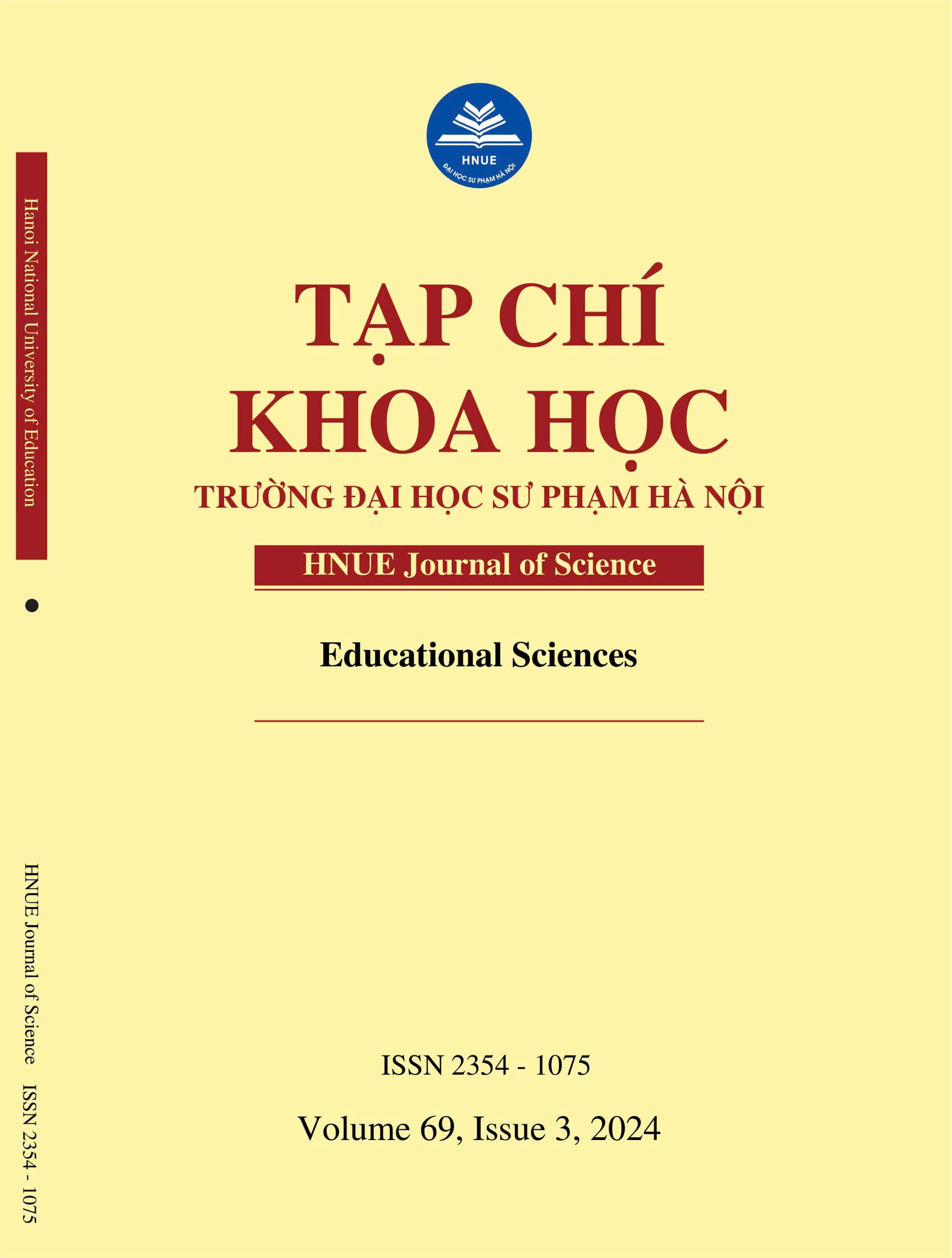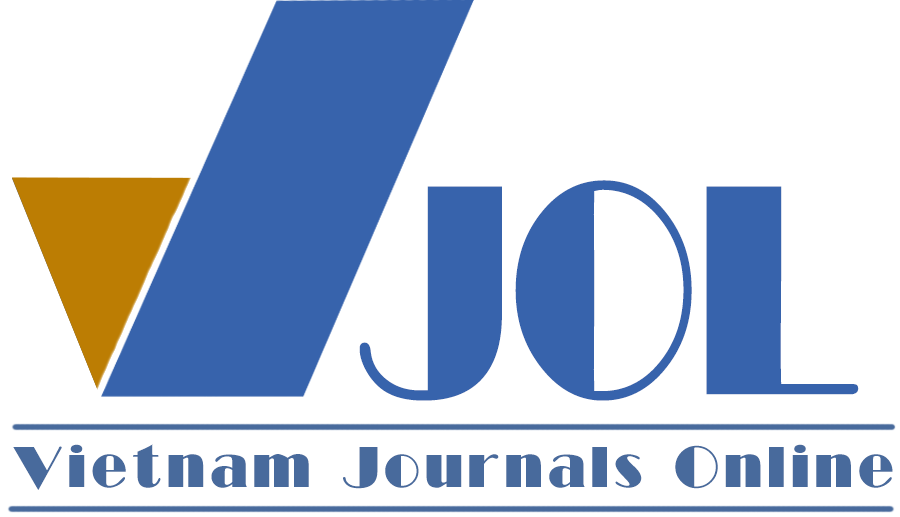APPLYING THE PRINCIPLES OF REALISTIC MATHEMATICS EDUCATION (RME) IN TEACHING FOURTH-GRADE MATHEMATICSIN VIETNAM
DOI:
https://doi.org/10.18173/2354-1075.2024-0056Keywords:
RME, teaching mathematics, primary schoolsAbstract
This article highlights the importance of applying Realistic Mathematics Education (RME) in teaching mathematics at primary schools. It serves as a tool to cultivate a deeper, more intuitive understanding of mathematics among primary students, aligning with educational trends and specific educational objectives delineated in the 2018 Mathematics curriculum in Vietnam. The teaching of mathematics at the elementary level in Vietnam is undergoing significant changes with the application of RME theory. The aim is to make mathematics more meaningful and engaging for students by incorporating RME principles into the design of problems that are connected to everyday experiences.
Downloads
References
[1] Treffers A, (1987). Three dimensions. A model of goal and theory description in mathematics instruction. The Wiskobas project. Dordrecht: D. Reidel Publishing Company.
[2] De Lange J, (1987). Mathematics, Insight and Meaning: Teaching, learning and testing of mathematics for the life and social sciences. Utrecht, Holland: Rijksuniversiteit.
[3] Van den Heuvel-Panhuizen M, (1996). Assessment and realistic mathematics education. CD-ß Press/Freudenthal Institute, Utrecht University, Utrecht.
[4] Freudenthal H, (1991). Revisiting mathematics education: China lectures. Kluwer Academic Publisher, Netherlands.
[5] Gravemeijer K, (1994). Developing Realistic Mathematics Education. Utrecht: CDBeta Press.
[6] Van den Heuvel-Panhuizen M. (2000). Mathematics education in the Netherlands: A guided tour. Freudenthal Institute CD Rom for ICME 9. Utrecht University, Utrecht.
[7] Van den Heuvel, Panhuizen M, (2003). The didactical use of models in Realistic Mathematics Education: An example from a longitudinal trajectory on percentage. Educational Studies in Mathematics, 54 (1), 9-35.
[8] Sumirattana S, Makanong A, & Thipkong S, (2017). Using realistic mathematics education and the DAPIC problem-solving process to enhance secondary school students’ mathematical literacy. Kasetsart Journal of Social Sciences, 38(3), 307-315. https://doi.org/10.1016/j.kjss.2016.06.001.
[9] Cahyaningsih U & Nahdi DS, (2021). The effect of realistic mathematics education on elementary students’ critical thinking skills. Journal of Physics: Conference Series, 1764(1), 012127). IOP Publishing. DOI:10.1088/1742-6596/1764/1/012127.
[10] Papadakis S, Kalogiannakis M & Zaranis N, (2017). Improving mathematics teaching in kindergarten with Realistic Mathematical Education. Early Childhood Education Journal, 45(3), 369-378. https://link.springer.com/article/10.1007/s10643-015-0768- 4#citeas.
[11] Tran C & Nguyen TD, (2018). Exploring Realistic Mathematics Education connected to practical applications and applying it to develop practical exercises in teaching Mathematics. Vietnam Journal of Education, (Special Issue Period 2 - May/2018), 165-169 (in Vietnamese).
[12] Le TT, Pham AG & Nguyen TT, (2021). Applying the theory of Realistic Mathematics Education (RME) in teaching - Some challenges, principles, and recommendations. Vietnam Journal of Education, (494) (Period 2 - 1/2021), 37-43 (in Vietnamese).
[13] Le TA & Tran C, (2020). Approaching and proposing some measures for applying RME theory in teaching and learning mathematics in Vietnam. HNUE Journal of Science, 65(7), 162-173 (in Vietnamese).
[14] Nguyen THD & Nguyen PL, (2021). Some fundamental methodological issues relating to teaching the multiplication of two natural numbers to primary students. HNUE Journal of Science, 66(4), 184-196 (in Vietnamese).
[15] Nguyen THD & Nguyen PL (2022). Developing primary students’ understanding of mathematics through mathematization: A case of teaching the multiplication of two natural numbers. European Journal of Educational Research, 11(1), 1-16. https://doi.org/10.12973/eu-jer.11.1.1.
[16] Wahyudi M, Joharnam M & Ngatnam M, (2017). The development of Realistic Mathematics Education (RME) for Primary Schools’ prospective teachers. International Conference on Teacher Training and Education 2017 (ICTTE 2017), Atlantis Press, p. 730-742.
[17] Robert KS, Sutarto H & Maarten D, (2008). Reforming mathematics learning in Indonesia classrooms through RME. ZDM Mathematics Education. DOI 10.1007/s11858-008-0125-9
[18] Le TA, (2007). Applying Realistic Mathematics Education in Vietnam: Teaching middle school geometry. Doctoral dissertation, University of Potsdam.
[19] Van den Heuvel-Panhuizen M & Drijvers P, (2020). Realistic mathematics education. Encyclopedia of Mathematics Education, p. 713-717.
[20] OECD, (2018). Education at a Glance 2018: OECD Indicators. https://www.oecd-ilibrary.org/education/education-at-a-glance-2018_eag-2018-en.
[21] World Bank, (2020, accessed July 23, 2024). World Development Report 2020: Learning for All. https://www.worldbank.org/en/publication/wdr2020.
[22] Nguyen TD, (2024). Teaching Calculus in High School based on the Realistic Mathematics Education (RME) Approach. Doctoral dissertation, The Vietnam National Institute of Educational Sciences (in Vietnamese).
[23] Ha HK, Le AV, Nguyen A, Vu VD, Nguyen MH, Hoang QH & Bui BM, (2018). Textbook Series: Connecting Knowledge with Life Mathematics 4 - Volume 1. Education Publishing House (in Vietnamese).







